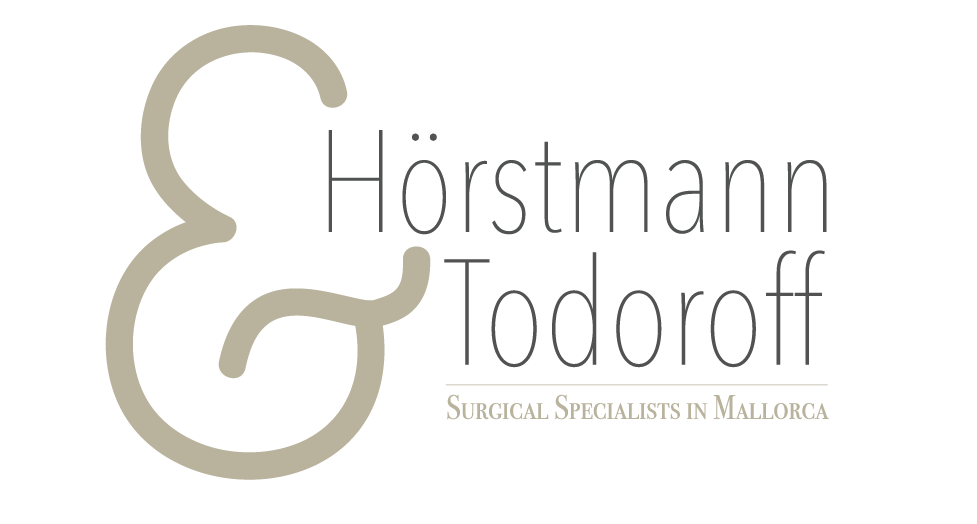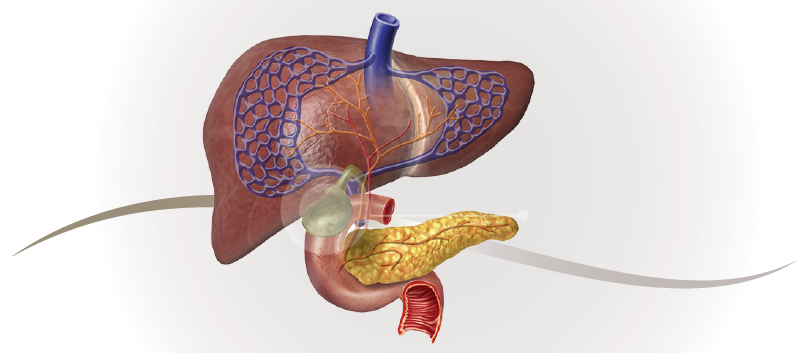-
Gallbladder Diseases
Bile is a saline solution, which is produced in the liver and then discharged through the bile ducts into the duodenum. There it gets mixed together with the gastrointestinal contents. The main task of the bile is to prepare and “refine” the fats so they can be absorbed through the intestinal lining. The fats are divided into small droplets and surrounded by bile salts, so that they get into a water soluble form and the actual digestion can begin.
The bile is continuously produced by the liver and stored and concentrated in the gallbladder. The gall bladder is thus only one storage organ. When the ability of bile salts to stay in solution is exceeded, there may be a precipitation of bile salts. This means they forming crystals, favoring the formation of actual gallstones.
Biliary Colic, Complications caused by gall stones
When a person eats a fatty meal, the gallbladder empties itself by contraction. Now it can come to the trapping of smaller gallstones in the outlet of the gall- bladder, which can cause extremely painful biliary colic (= Gall Bladder spasms).
Sometimes the smaller gallstones can leave through the cystic duct and then block the other biliary tract (= common bile duct) where it enters the duodenum. This can cause a number of serious complications, for example the accumulation of digestive juices from the pancreas, followed by inflammation of the pancreas (pancreatitis) and possibly self-digestion of the gland and life-threatening inflammation in the abdomen.
Often gallstones are found by chance during routine examinations and do not require treatment if they do not cause any discomfort. But if there is biliary colic, inflammation of the gallbladder or if there are complications of gallstone disease, the removal of the gallbladder is strongly recommended. A sole removal of the actual gallstones would have no lasting effect, because new stones would be formed and can cause the same problem again.
Operative removal of Gallbladder
This type of surgery is almost always performed laparoscopically. The surgical procedure lasts about an hour and usually requires hospitalization for only one or two nights.
After the operation, there are no special diets necessary because the same amount of bile is produced in the liver and biliary colics after the intake of fatty foods can not happen because the gallbladder does no longer exist. However in the first three to four weeks after surgery, is advisable – as for all abdominal operations – to avoid physical exertion to prevent any incisional hernias.
The removed gallbladder – as all surgically excised tissue – is sent for histological appraisal to he Patholigist to exclude malignant changes which are fortunately very rare.
- Home
-
General Surgery
Breast, Skin & Soft Tissues SurgeryEndocrine surgeryVisceral surgeryAbdominal wall herniasColon and rectum surgeryProcedures
- Plastic Surgery
- News
- Medical Center
- Contact
- English
- Home
- General Surgery
- -- Breast, Skin & Soft Tissues Surgery
- ---- Breast Surgery
- ---- Skin & Subcutaneous Tumours
- ---- Wound healing disorders
- -- Endocrine surgery
- ---- Diseases of Thyroid Gland
- -- Visceral surgery
- ---- Gallbladder Diseases
- -- Abdominal wall hernias
- ---- Hernias
- -- Colon and rectum surgery
- ---- Colorectal Carcinoma
- ---- Diverticulosis and diverticulitis
- ---- Rectal anal Carcinoma
- ---- Haemorrhoids
- ---- Inflammation of the anus
- -- Procedures
- ---- Laparoscopic Surgery
- Plastic Surgery
- -- Head area
- ---- Facelift
- ---- Thread lifting
- ---- Wrinkle Removal
- ---- Eyelid Reduction
- ---- Forehead Lift
- ---- Neck Correction
- ---- Chin Correction
- ---- Nose Correction
- ---- Ear Correction
- ---- Age Spots Removal
- -- Upper body area
- ---- Breast Enlargement
- ---- Breast Lift (MASTOPEXY) / Breast Reduction
- ---- Gynecomastia – breast surgery in men
- ---- Thightening of upper arms
- ---- Abdominoplasty – “TUMMY TUCK”
- ---- Liposuction
- -- Lower body area
- ---- Liposuction
- ---- Thigh Tightening
- ---- Thightening of buttocks
- ---- Female intimate surgery
- News
- Medical Center
- -- Recommendations & Cooperations
- Contact
- English
- -- Deutsch

